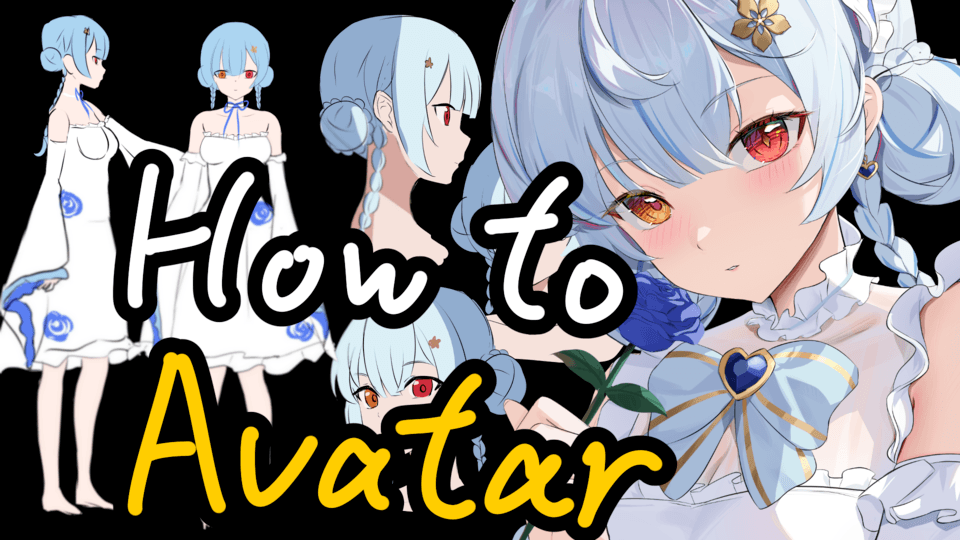Tips&How to Use Pattern in B&W Manga Illustration
Introduction
ClipStudio paint have an advanced pattern features to create repeating elements(like backgrounds) or motifs (for clothes, textile, etc)or texture for your drawings.
Im Aseftier and in this second tutorial i will show you about tricks and how to add pattern to B&W manga illustration!
Choosing Pattern
Pattern divided to Color have two Categories (Monochrome Pattern and Color Pattern)
Monochrome Pattern direct from CSP Materials already suitable for Black&White Manga. best B&W Pattern is have transparent background and high resolution.
Colored pattern is not recomended, but it can be used as monochrome pattern using Layer Property Effects,but we will explain it later after the monochrome one.
how to use it is easy! the most first basic step is just select the are you need and drag the pattern from the materials.
but if you want to use pattern outside materials you can do [Import]>[Pattern from Image]
We can resize it whatever we want but always remind it is a bitmap layer so it have a limit, so use the hi-res one.
Transformation of Pattern
There is different transform mode options: Prespective, Skew, Distort, Scale, Rotate, Free Transform and Scale/Rotate.it provides to do transform the pattern to distort&match the surface/prespective infinitely except mesh transformation. but the transform result noisy rendered lines which is not looks good in illustration. so always mask or erase the noisy lines and dont let that appear in your drawings.
this is the second method. with using Select the area>Right Click>[Rasterize] then go to [Edit]>[Transform]> Free Transform(you can go to other mode, but the common is free transform or shortcut Ctrl+Alt+R. The render is smoother, but the cons is: the area is limited to the selection or drawing area, and it cannot be edited so make sure the prespective is correct.
Usually, B&W Manga doesnt need to warp the pattern correctly. but for the recent technology its possible to do it so it can give more depth. But the pattern materials doesnt provide edit the mesh directly. So it need to Rasterized then go to [Edit]> [Transform]> [Mesh Transformation] or shortcut [Ctrl+Alt+T]
Changing The Color of Monochrome Pattern
some of monochrome pattern only provides black color. so if you wanna change the color, you can go to [Layer Property]>[Effect]>[Layer Color]>choose the color you want (note:always go to black&white only)
Masking the only needed area
The pattern is only on some few part in the attached reference. so you can go to mask mode of the layer then remove the unneeded parts. You can use any contrast brush (i use crosshatching brush or pen). dont use the soft one. As you can see the previous step, always mask the noise part of perspective pattern point.
Changing the Pattern Line Width
Its better to not use hairline/thin pattern on the screentoned area.. Because it will not be visible enough so its better to use thicker pattern.
The First method is using [Layer Property]>[Layer Styles]. The pros is the weight of line is editable. The cons is the rendered line is more rounded and you cannot get thicken line option.
The Second is Right Click layer>[Rasterize] then go [Filter]>[Correct Line]>[Adjust Line Width]. You can adjust the thickness you want. But The cons is its uneditable and the pattern is not layer material so its not seamless again.
Note: it better if not adjust the width on non-lineart motif. its suitable for pattern which have clear outline or the background pattern material
This is the finished images of monochrome pattern!
Convert Colored Pattern to Monochrome/Screentoned Pattern
What if i already have the pattern for the character but i need the materials in black&white manga?YES you can do, but its not easy to convert the colored pattern so you will need technical technique to convert it. The softer pattern, the harder to convert it gets.
You can go to [Layer Style]>[Effect]>[Tone] to convert the pattern
for posterize mode, i use 100% (black), 50%, and 30% screentone. here is the different between posterized and not posterize
no posterize pattern is softer and it get the true value of pattern but not contrast enough for B&W Manga. Now it just depend to the purpose and what you need.
There is the result of another softer and transparent pattern would not really appear well if we zoom in.
Here is the result!
BONUS: Free Materials
You can download the scalies pattern here and try the tutorial! have fun!
character design belong to Kenzie Labdajaya and Cakil
Also, you can follow my IG &Twitter!
























Comentario